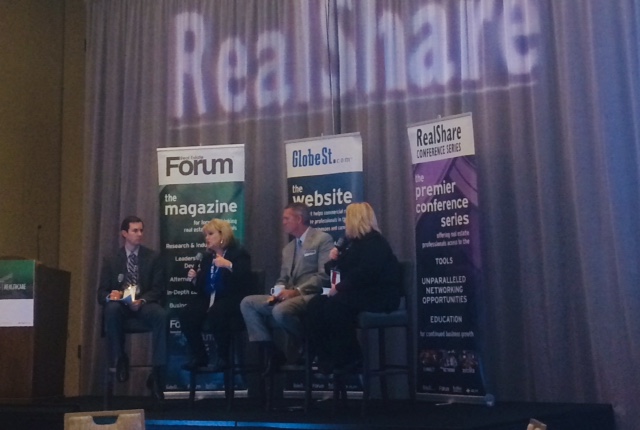 While skilled nursing facilities have struggled to remain profitable, they remain a part of healthcare's universe say panelists at RealShare Healthcare.
While skilled nursing facilities have struggled to remain profitable, they remain a part of healthcare's universe say panelists at RealShare Healthcare.
SCOTTSDALE, AZ—“We have a long way to go.” So said Kathleen Collins Pagels, former executive director of Arizona Health Care Association & President of KC Pagels & Assoc., when talking about electronic health records and communication across post-acute settings. As a speaker at the recent RealShare Healthcare conference here last week, she said that over the last few years, there have been significant industry changes in long-term and behavioral healthcare, and skilled nursing facilities have struggled to remain profitable due to pressure on reimbursement rates, payment reform, and rising costs even motivating a number or REITs to sell off properties.
However, evolution of long-term healthcare panelists said, these facilities remain part of the healthcare universe and some providers are finding ways to increase revenue by adding services and rebranding as subacute facilities. “They need to step up and have better communication with downstream partners,” Collins Pagels explained.
She joined moderator Cole Gearhard, shareholder of the healthcare industry group at Winstead PC, along with John Thomas, president and CEO of Physicians Realty Trust, and Amy Malkin, COO of Pioneer Health Group, to discuss the way long-term care is being disrupted and how to be profitable in a space in turmoil.
“We have to evolve,” said Malkin. “And it isn't about a brand new building.”
Malkin explained that she is seeing brand new, beautiful buildings being built, but many are having a hard time due to the relationships you need to have with the hospitals. Those relationships are often times overlooked, she said. “Our buildings are about 30 years old but we put the work into the partnerships.”
While it is a challenging time, there is a lot of opportunity out there, explained Collins Pagels. “We have seen an evolution of skilled-nursing. More than anything, we are dealing with the increased high acuity that we are seeing in both assisted living and skilled nursing. Both challenge and opportunity are present and we are on the cusp of a lot of change.”
The facilities that are successful have best-in-class operators but are also partnered with best-in-class operating systems, explained Thomas. “The stand-alones that don't have those case manager connections and referral programs are going to have trouble. It is all about the continuum of care.”
The real key is understanding your local market in terms of competition in the space, noted Collins Pagels. “Competition is thriving in the market and is driving in some cases a much better product.”
In today's marketplace, the complexity of administration for skilled-nursing and long term care has grown exponentially, she added. “Being competitive means having the top talent to address the relationship management that is essential to succeed in today's long-term care marketplace.”
But that top talent is sometimes hard to come by. Malkin said there is always a shortage with registered nurses. “There are quite a few work groups, though, that are trying to find solutions.”
When it comes to workforce, Collins Pagels added, there is as much of a retention problem as there is a recruitment problem. “It tends to be an occupation of acceptation, not selection. If we don't hire Millennials in long term care, Uber care giving and Amazon caregiving is going to hire them.”
She adds that if that isn't a top concern when running a long-term care business, “you are missing the mark” and have to think about how to deal with their generational needs.
© Touchpoint Markets, All Rights Reserved. Request academic re-use from www.copyright.com. All other uses, submit a request to [email protected]. For more inforrmation visit Asset & Logo Licensing.







